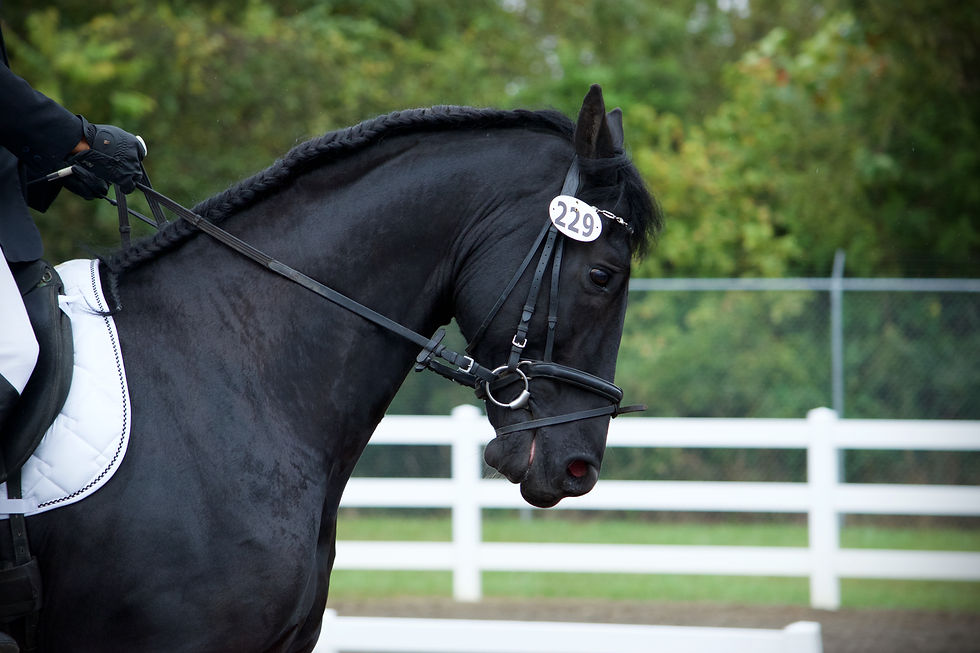Bridle Lameness
- Jan 12, 2023
- 2 min read
Updated: Jan 24, 2023

In a recent article published in the Equine Veterinary Education, it was pointed out that “the equestrian world had coined the term “bridle lameness” to describe many forelimb lamenesses evident when a horse was ridden, but not apparent under other circumstances.” The idea was that this was not a pain-related problem but rather a training or rider-induced issue with the horse. It has more recently been determined that riding can exacerbate forelimb or hindlimb lameness and that riding the horse during the lameness examination must be considered. One such lameness was discussed by Drs. Dyson and Rasotto was described as an “idiopathic hopping-like forelimb lameness syndrome in ridden horses.” Their study was a retrospective one in which the lameness records (collected over a period of 12 years) of 46 horses, ages 4-13 years old, all of whom had a history of known or suspected trauma immediately before the onset of reduced performance of lameness, were reviewed.
The lameness was most easily seen when the horse was under saddle at a trot, with the affected forelimb having a shortened forward stride and the head coming up as the affected limb was extended. The horse would also try and “hop” on the opposite limb as if trying to break into a canter from the trot. Some of the horses would refuse to trot altogether, and others would have severe stumbling. This reluctance to go forward was seen in a large percentage of these affected horses. Blocking the limb did not resolve the lameness, with some horses becoming worse once the block was done. Radiographs, nuclear scintigraphy, and ultrasound were inconclusive. At necropsy, it was determined in three horses that there was an issue with the nerve roots at the level of the 5th, 6th, +/- 7th vertebrae of the neck on the side of the affected forelimb. Three other horses had muscle injuries; one horse had arthritis in the shoulder joint. The authors concluded that “idiopathic hopping-type lameness syndrome in ridden horses may be a pain-related condition or condition(s) with a neurological component in some horses and which currently has a guarded prognosis.”
Relevance: The presence of lameness only while a horse is being ridden points out the necessity of having a riding horse observed at all gaits as part of the prepurchase examination. It is easy to see how a potentially performance-limiting lameness could remain undetected, only to become obvious when the new horse is home and being ridden by its new owner.
Scientific Article: Dyson, S and Rasotto, R. Idiopathic hopping-like forelimb lameness syndrome in ridden horses; 46 horses (2002-2014). EVE Jan 2016, pp. 30-39.


Comentarios